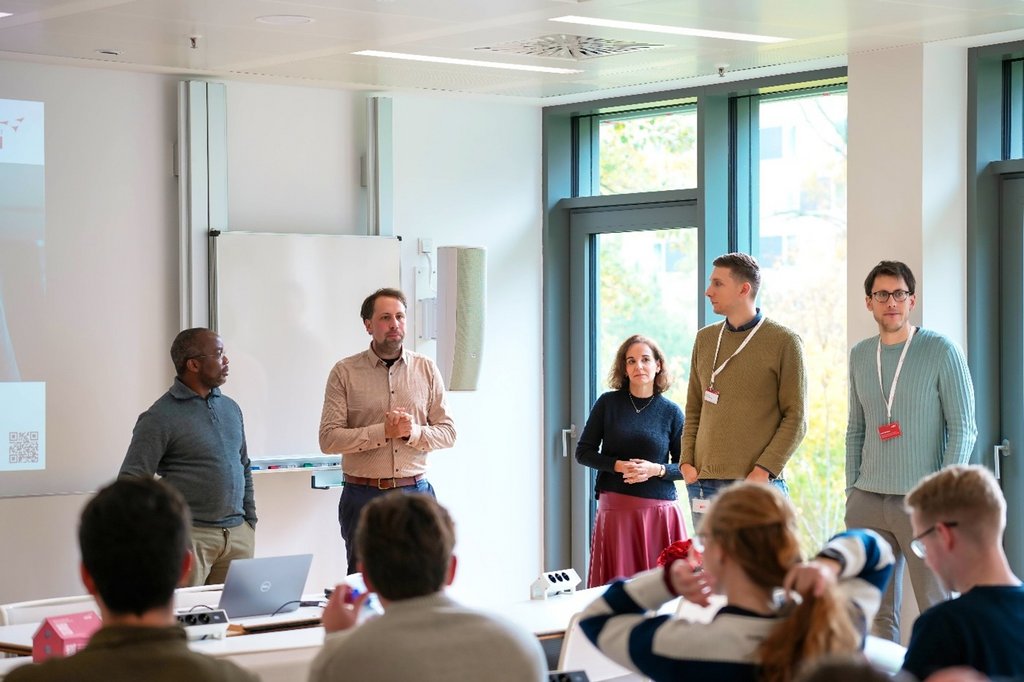Campus - 31.10.2025 - 12:00
Why is Basel a magnet for life sciences companies? How does Frankfurt manage to be a logistics hub, financial metropolis and high-tech location all at once? And how do networks and location policy contribute to the innovative strength and success of companies? These questions were addressed by 20 students from the University of St.Gallen during the excursion “Economic clusters as drivers of innovation and growth”, which took place from 27 to 29 October 2025 under the direction of Prof. Tobias Ebert (Institute of Behavioural Science and Technology at the School of Management).
The excursion stemed from the course of the same name, in which students develop theoretical foundations for the emergence and functioning of economic clusters. Economic clusters (i.e. spatial concentrations of companies, research facilities and supporting institutions) are considered key drivers of economic dynamism and innovation. They determine how knowledge is shared, talent is attracted and new technologies are developed. Clusters offer companies decisive competitive advantages, as they facilitate access to skilled workers, specialised suppliers, new ideas and cooperation partners. They are therefore of great strategic relevance to national economies and, at the same time, an exciting example of how economic and political processes overlap.
During a visit to the regional economic development agency Basel Area and Novartis, the students experienced how closely research, industry and location promotion work together to drive innovation. Basel proved to be an example of how successful clusters are based on mutual trust and the exchange of knowledge. The region demonstrates how decades of cooperation between science and industry lead to global competitiveness.
In the Frankfurt am Main region, the focus was on issues of networking, digitisation and infrastructure. At the regional economic development agency FRM-United, the House of Logistics and Mobility (HOLM), Fraport at Frankfurt Airport, the Telehouse data centre (one of the largest data centres in Europe) and the Heraeus Group (technology leader in the precious metals sector and member of Materials Valley e.V.), it became clear how diverse cluster structures in a metropolitan region can be across different industries. Whether mobility, high-tech materials or digital infrastructure: all examples showed that clusters function as learning systems. Companies, research institutions and public actors respond jointly to technological challenges and develop new forms of cooperation, for example through open innovation platforms and cross-sector networks.
It became clear at all stops: clusters thrive on shared knowledge, trust and the ability to shape change together. For the students, the excursion not only provided practical insights into corporate and location strategies, but also a deeper understanding of how theoretical concepts take shape in real innovation processes. "For our students, this excursion was an opportunity to experience economic geography concepts in practice and to engage in conversation with actors who actively shape innovation processes. At the same time, it highlights the central role that cluster structures play in corporate development and entrepreneurial decisions," emphasises Prof. Tobias Ebert.
The course contributes to practice-oriented teaching at the interface of corporate strategy, economic geography and regional policy and shows how teaching in the field can provide insights that would be hardly possible in the seminar room alone.
More articles from the same category
Discover our special topics
